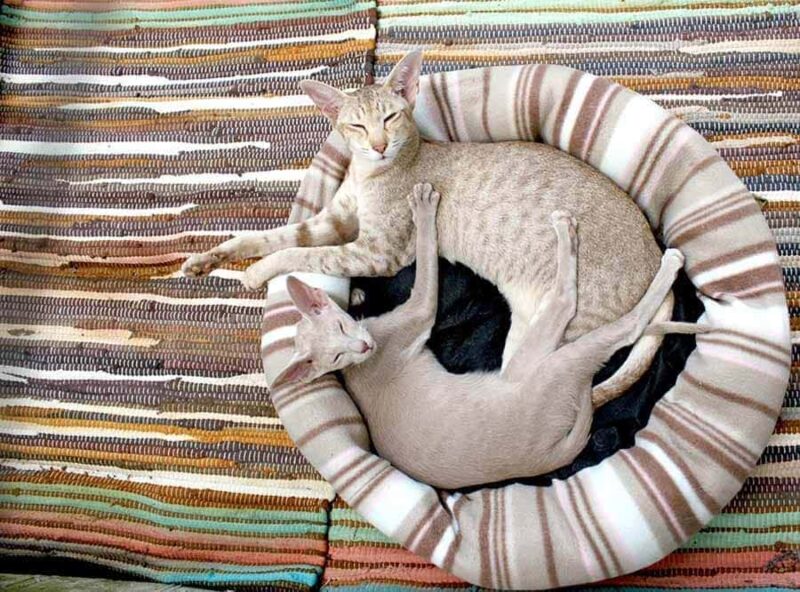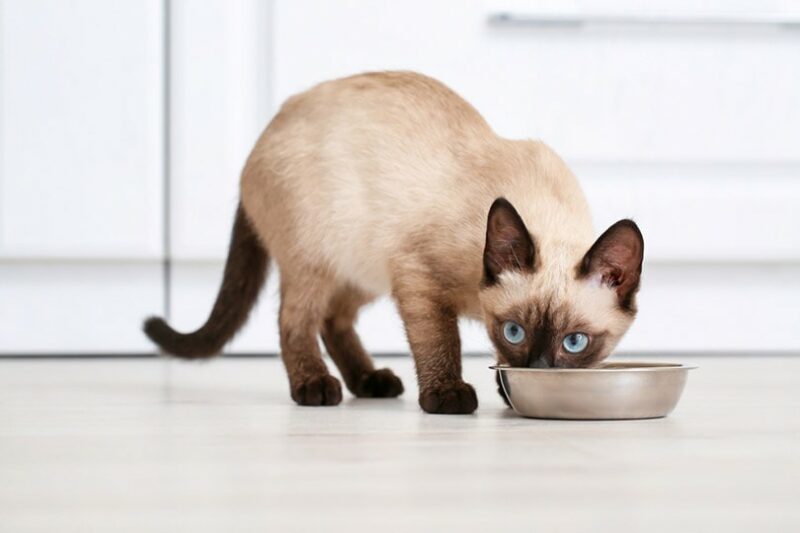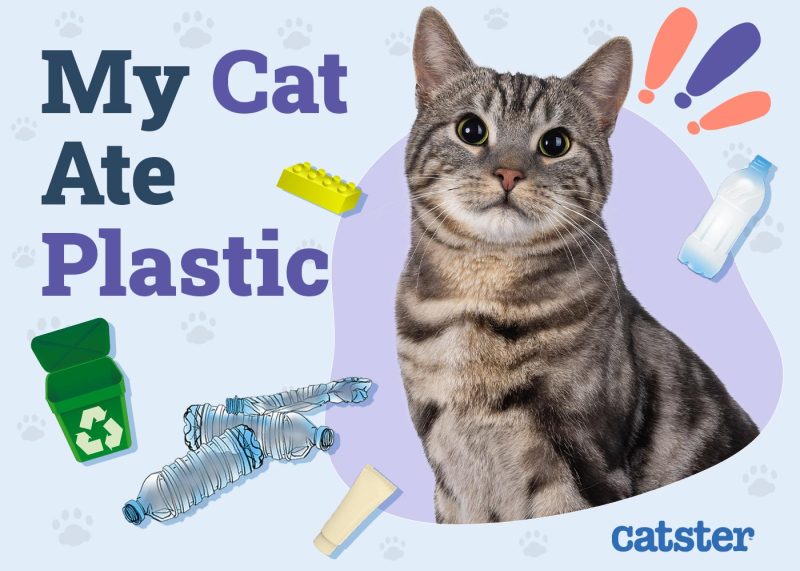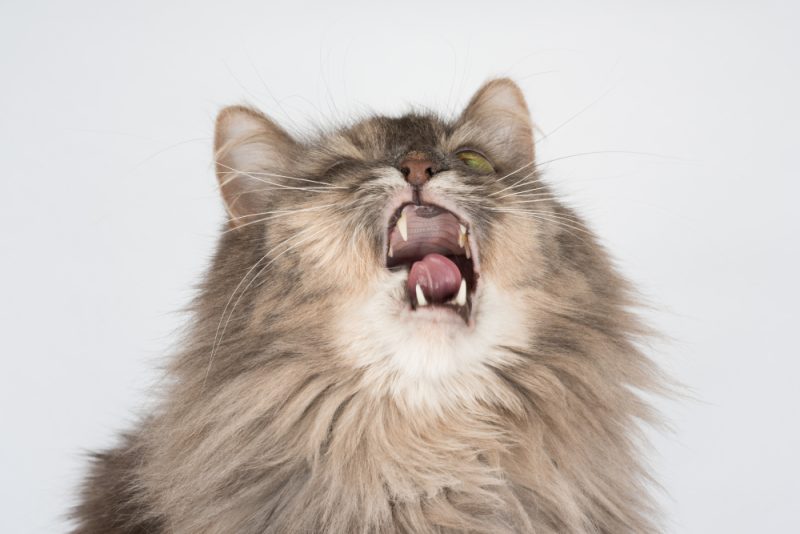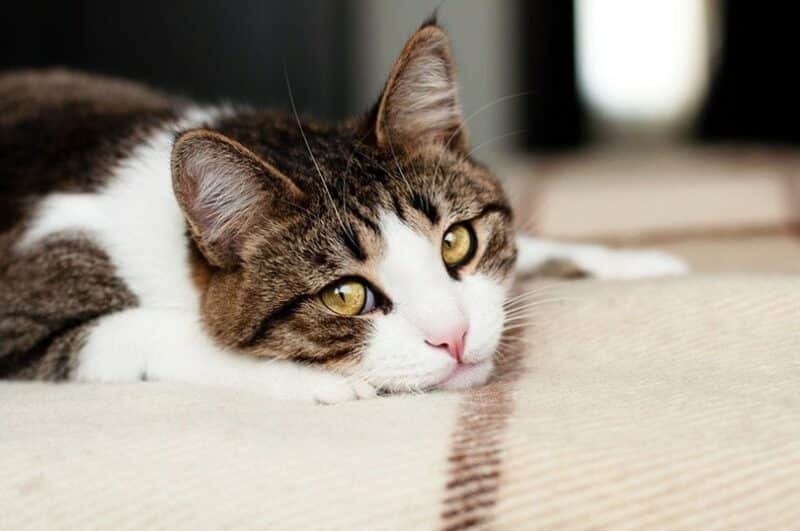Oriental Shorthairs come in the most colors of any recognized cat breed. These felines were originally bred from the Siamese, which only has a few available colors. However, as this breed was mixed with others, other colorations slowly became more common. Today, the breed comes in tons of different colors—over 100 variations by some estimations.
Below, you’ll find a complete list of official colors as recognized by the Cat Fancier’s Association.
The 14 Oriental Shorthair colors are made up of:

The 9 Solid Oriental Shorthair Colors
Oriental Shorthairs can have a solid coat color, which basically means they don’t have any markings. These cats have a consistent fur color throughout their whole coat, from the root to the tip. These solid colors can be mixed with different patterns, which we’ll discuss below.
1. Blue
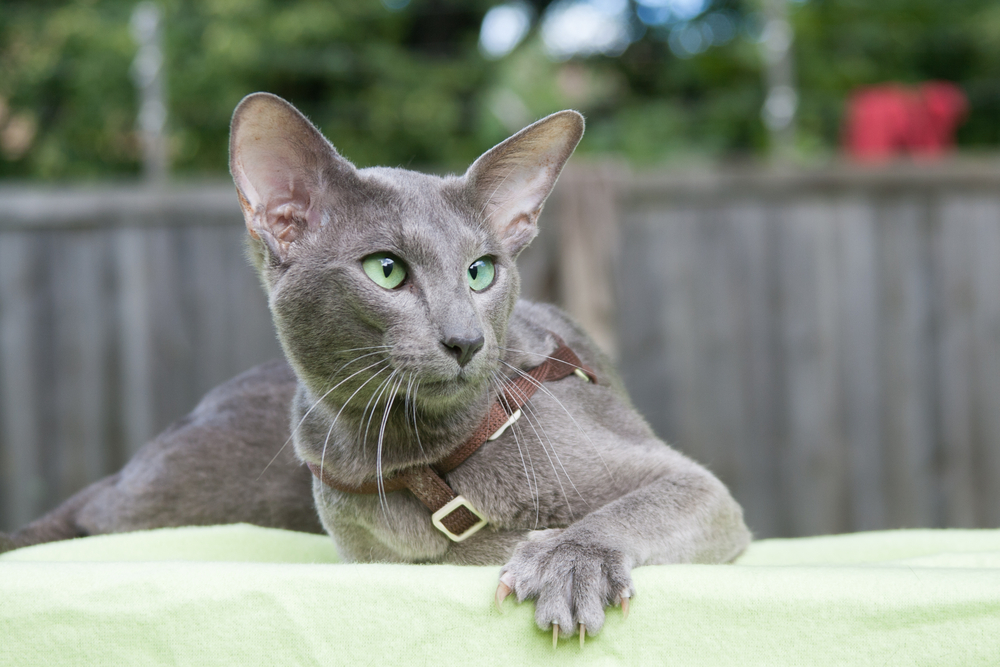
Despite the name, these cats aren’t actually blue. Instead, they have a grayish color with matching noses and paw pads.
2. Chestnut

Simply put, these cats are dark brown. Oriental Shorthairs come in a range of brown colors, some lighter than this.
3. Cinnamon
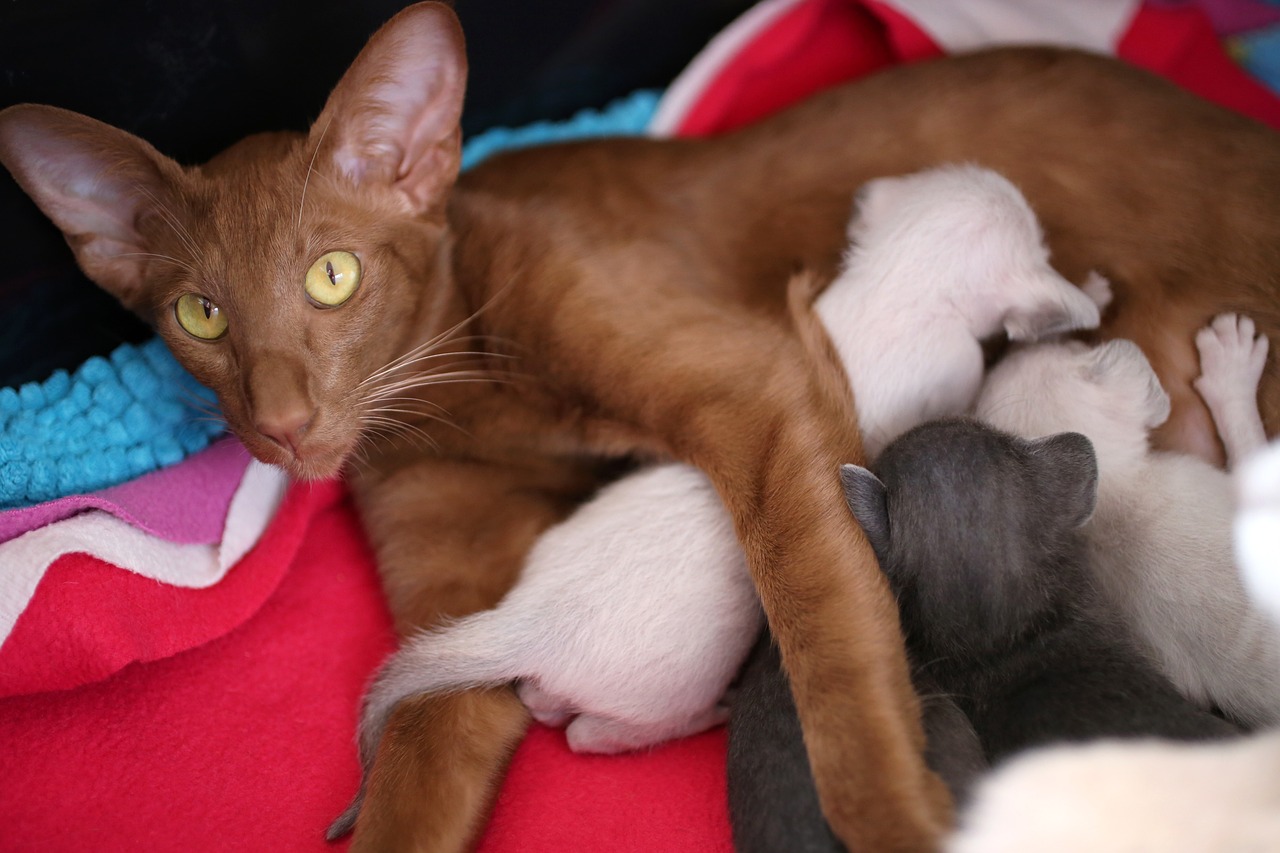
Cinnamon Oriental Shorthairs are lighter than their chestnut cousins. This color is described as rich and redder than other brown tones.
4. Cream
Cream is in the same range as other browns, but it is much lighter in color. The lightest shades are preferred by breeders and judges.
5. Ebony
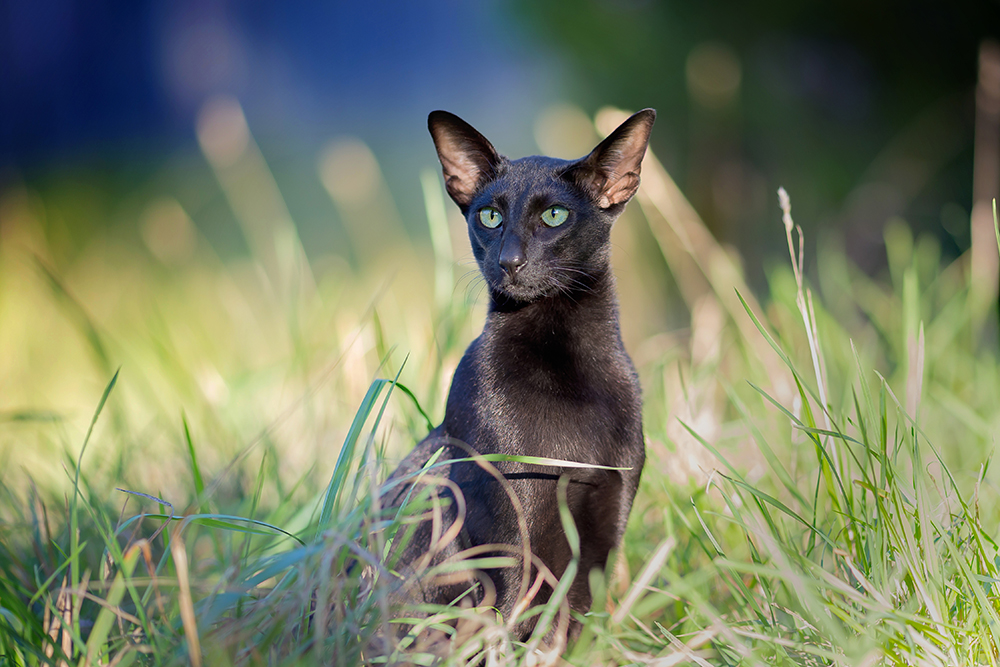
Ebony cats are black, though not necessarily the deep black you may associate with other cat breeds. They shouldn’t have any hints of red or pale undertones.
6. Fawn
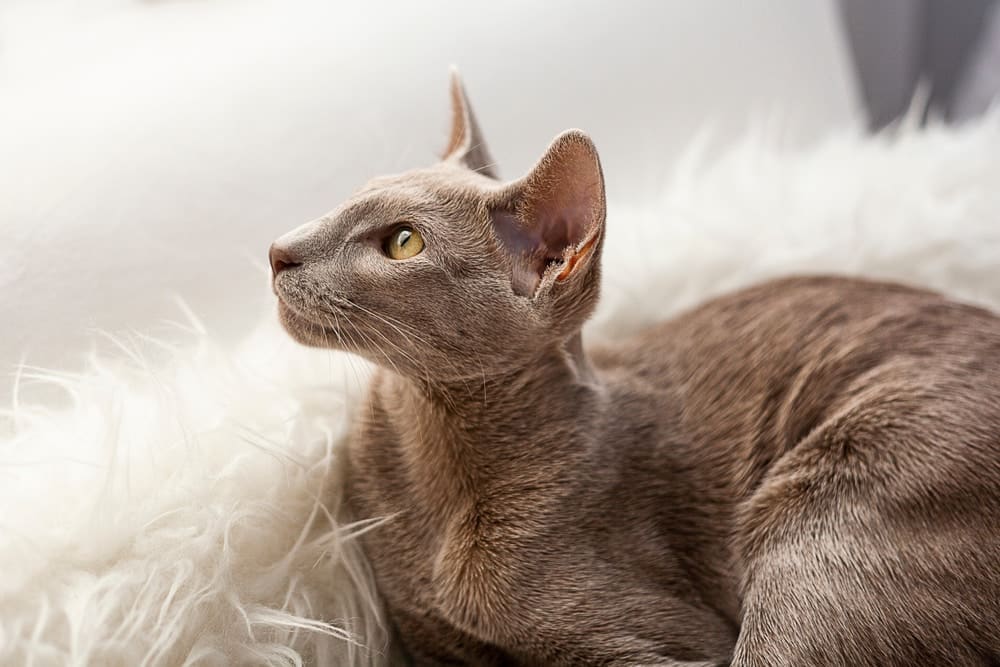
Fawn is technically lavender, but with brown overtones. Therefore, the cat ends up a lighter brown color with dusty rose paw pads.
7. Lavender
Lavender felines have a frosty-grey coat. They aren’t actually purple, despite their name. These cats should be lighter gray, as opposed to the “blue” coat color.
8. Red
Red felines are a darker version of cream with more red overtones. Markings are common with this coat color, but solid-colored cats exist, too.
9. White
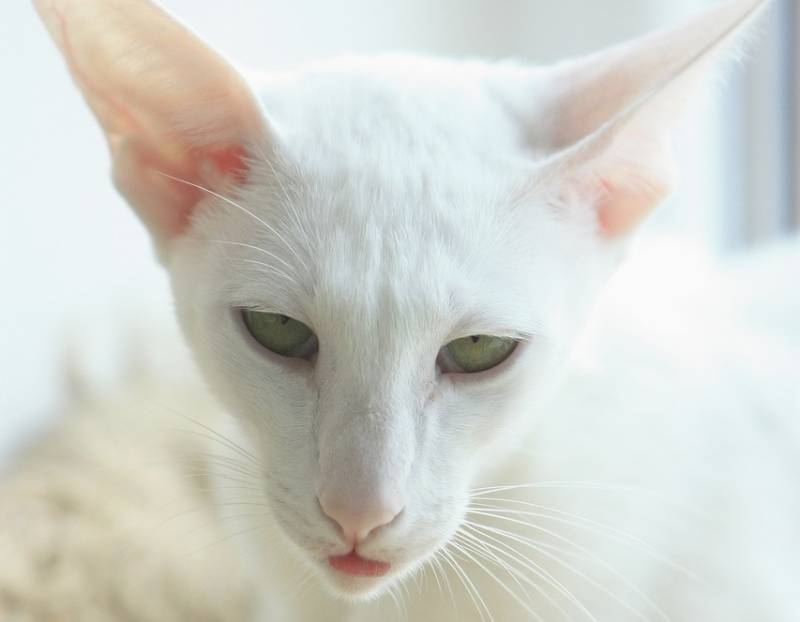
Rarely, you can find solid white Oriental Shorthair cats. This feline shouldn’t have any other markings, or it would fall into a different color category.
The 5 Oriental Shorthair Coat Patterns
All the colors above can appear in a range of different patterns, too. It’s the combination of all these patterns and all the available colors that give the breed so many different possibilities. However, because many of these patterns are extremely similar across the different colors, we’re going to explain them briefly—not list out every possible combination.
10. Shaded
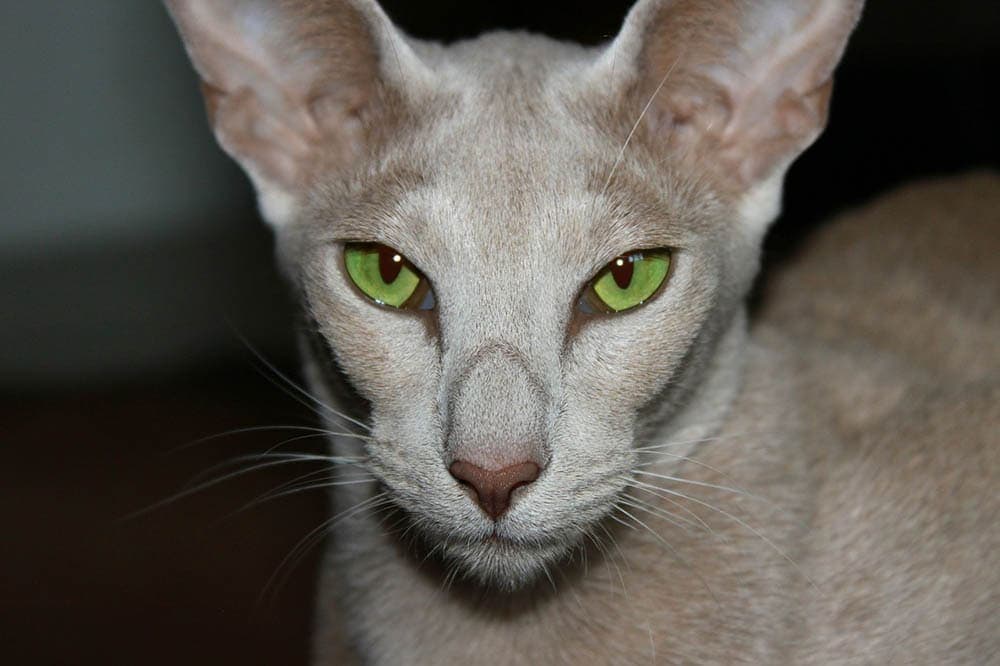
Some Oriental Shorthair cats are mostly solidly colored but with extra undercoat shades. These felines end up with markings and have a shaded appearance due to the difference in coloration throughout their coat. There are many different color combinations. However, cats should have only one of two undertones: gold or silver.
Golden
Cats with golden undertones can be tipped with any of the solid colors we mentioned above—almost, at least. White isn’t included in this, as the tips of the coat cannot be tipped with a lighter color than the undertones.
The “gold” undertone can vary from a very light off-white to an apricot, almost orange color. The tipping color will affect the paw pads and nose of the feline. The base color should slowly fade into the tipped color, giving the cat a smokey appearance.
Cats are categorized by their tipping and undertone color. For instance, a cat with a golden undertone and blue tipping would be called a “blue golden.”
Silver
Shaded cats can also have a silver undertone. Again, just about any solid color can occur as the tipping, including blue, chestnut, cinnamon, ebony, and fawn. All of these color combinations are recognized as separate coat colors. Cats with a silver undertone and cream tipping are called “cream silver,” while cats with the same undertone but ebony tipping are called “ebony silver.”
The tipped color will affect the paw pads. The silver undertone should always be white in color. For this reason, this coloration cannot be tipped with white. (A white undertone with white tipping would make the cat solid white.)
11. Smoke
Cats with the smoke pattern are a bit like shaded cats. However, instead of having a completely different colored undertone, the cat’s coat simply fades into the root. Their undercoat has a ring of white at the base that can only be seen when the fur is parted and observed.
Every coat color but white can appear in this pattern. Therefore, you can have a blue smoke feline that looks solidly colored until you part the fur and see white roots. White cats cannot come in this color, since they would just be solid white.
There is one color combination that doesn’t appear as a solid-coat color.
Parti-Color Smoke
This coloration is unique and not one of the solid colors. These cats have tipping on their coat of a darker color, such as black, blue, or chestnut. The tipping is combined in patches and can intermingle with red tipping. Varying different shades are acceptable on a single cat, and this coat color can also be diluted.
12. Tabby
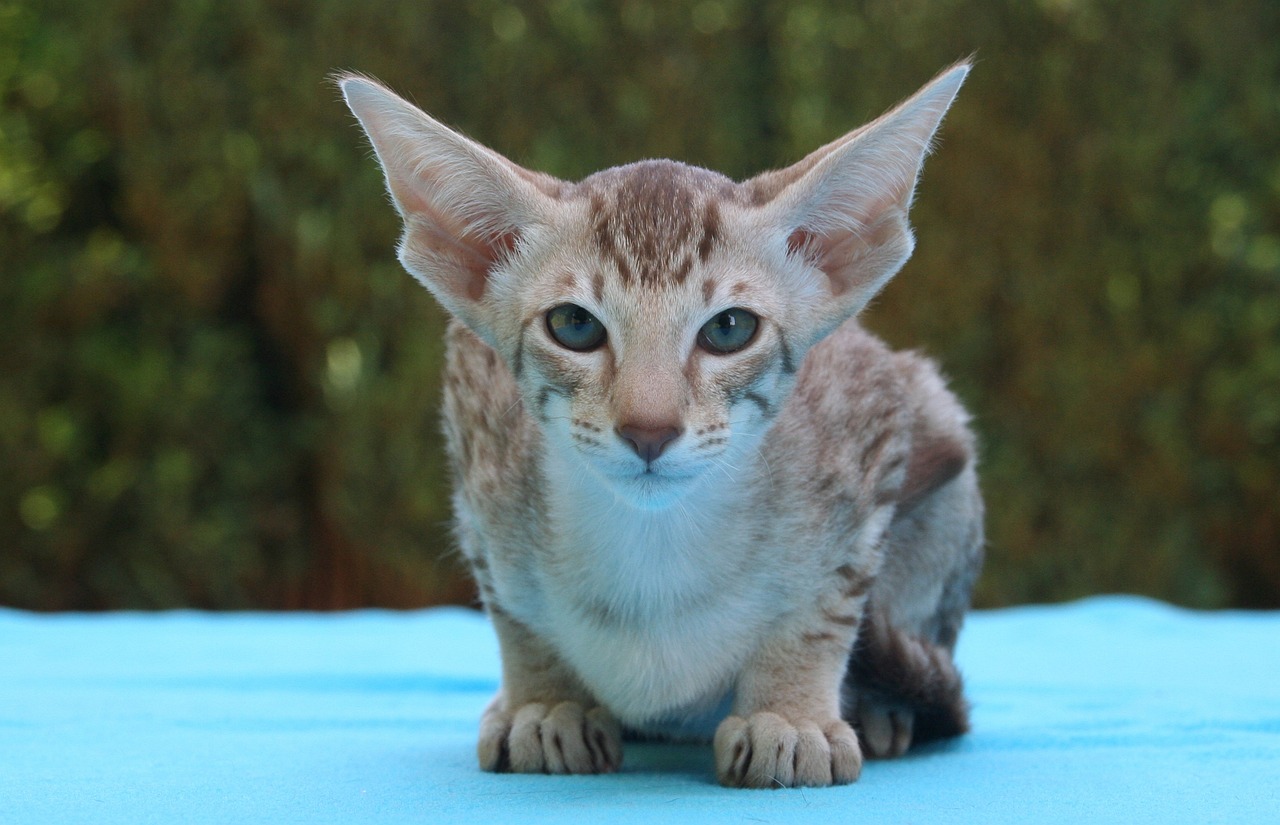
Just about everyone knows what a tabby cat is. Oriental Shorthairs can also have tabby colorations of various types. There are five basic tabby patterns, and these cats can come in any of them.
- Classic: This pattern is probably what you think of when you imagine a tabby cat. There is a distinct “M” on the cat’s forehead that helps identify it as a tabby. The markings should be clear, with unbroken bars and stripes running across the cat’s body. There should be swirls on the cheek and unbroken dark stripes coming off of the eyes.
- Mackerel: These tabbies have dense, narrow markings. The forehead should have a clear “M” and the face markings should be similar to a regular tabby. The main difference is the width of the stripes and bars, which should be smaller.
- Spotted: Spotted tabbies have spots instead of stripes. However, these spots should follow the traditional stripe lines. The spots shouldn’t be connected, and the preference is for evenly-spaced spots. The face and forehead have tabby markings that are not spotted and the legs and tail should have bars.
- Ticked: These felines are free from spots or stripes, except for slight shading across the dorsal line. The pale underside may show markings, but this isn’t required. The cat’s face should also have traditional tabby markings.
- Patched: As the name suggests, these cats have one of the previous tabby patterns—but only in patches. Often, these patches intermingle on areas of red on the body. Any shade of red is acceptable. Diluted coats will have patches of cream instead of red.
On top of the type of tabby pattern, cats can have any base color except white. The stripes can be silver or a different shade of the base coat. For instance, blue cats can have both blue and silver tabby markings. Cream can have silver or cream (at a slightly different shade than the base coat). Red tabbies can only have red or silver tabby markings.
Cats with markings at a slightly different shade are typically referred to by their base color, like “lavender tabby” or “blue tabby.” Cats with silver markings will have the word silver added, such as “lavender silver tabby.”
13. Bi-Color

As the name suggests, these Oriental Shorthair cats have two different colors. However, they are drawn from the base colors we described above. These felines have a white underside, feet, and legs. They will also have a “V” on their forehead. All solid colors combined with white are permitted—except, of course, white itself.
Bi-color also includes pointed cats. These felines will appear white all over except for their extremities, which will be pointed in a different color. This coloration is the same that Siamese cats are known for.
This coloration can also be combined with many of the patterns above. For instance, cats may have an undertone on their colored areas. Some cats may also have patches of white.
14. Parti-Colored
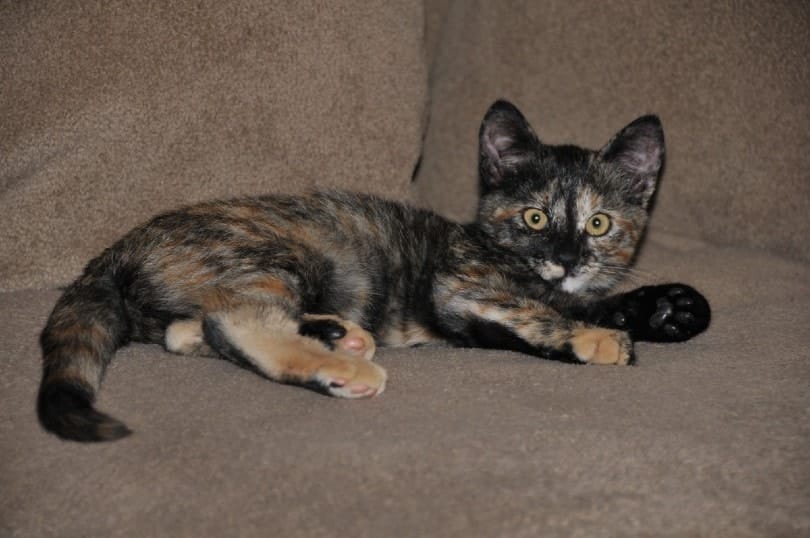
Parti-colored cats are spotted. Not all coat colors can be spotted, but the spots are almost always a variation of cream. Blue with cream, lavender with cream, and fawn with cream are allowed.
Tortoiseshell cats fall into this category. When a cat is tortoiseshell, the base color must be ebony, cinnamon, or chestnut.

Conclusion
Oriental Shorthair cats can come in just about any coat color and pattern. It’s all the different combinations of colors and patterns that allow them to come in so many different options. For instance, there are nine accepted base colors and five different variations of tabby. That leaves you with tons of different tabby options alone, not counting the different stripe variations and other patterns.
In the end, all these different patterns allow Oriental Shorthairs to come in more variations than any other cat breed.
Featured Image Credit: Pexels
